Organizations with frontline workers cannot be successful if their teams are not supported with the tools and information they need on the spot. From healthcare professionals to friendly faces in retail, frontline staff are the people that represent a business, drive sales, and give customers a reason to come back.
Since the COVID-19 pandemic, it’s become imperative to equip frontline workers—and entire workforces—with the right technology that connects them to crucial information and each other. A modern intranet can support and serve essential and frontline workers as a platform for internal communications, training, shift management and staff scheduling, feedback and evaluation, and employee recognition. With intranet solutions, key workers have access to the information and resources they need to do their jobs effectively, which makes them feel more connected and valued within the organization.
Here’s how the power and potential of intranets can be a game-changer for frontline workers and help everyone thrive at work.
Who are frontline workers?
Frontline workers, also known as key workers or essential workers, represent 80% of the entire global workforce. They are the employees who directly interact with customers, clients, and patients in various industries such as healthcare, retail, hospitality, manufacturing, and services.
Let’s look at a few specific examples:
-
- Healthcare staff: In a hospital setting, frontline workers often include doctors, nurses, and other medical staff who directly interact with patients. They provide medical care, administer treatments, and offer support to patients and their families.
- Retail sales associates: In the retail industry, frontline employees are the sales associates who assist customers, handle inquiries, and facilitate purchases. They represent the face of the company and are instrumental in delivering exceptional customer service.
- Field service technicians: In industries such as telecommunications, utilities, and manufacturing, frontline staff can be field service technicians. These professionals are responsible for installing, maintaining, and repairing equipment or systems at customer locations.
As you can see, frontline workers play a pivotal role in delivering services, providing support, and representing their organizations on the front lines. Not only do key workers possess customer service skills, but they need to be equipped with industry-specific knowledge and expertise to deliver accurate information and provide tailored support.
But where can key workers get hold of institutional knowledge and relevant information that matter most to their jobs? This is where a knowledge base comes in, as a part of modern intranet solutions.
Here’s how a knowledge base can empower frontline workers
A 2020 study shows 65% of frontline or deskless workers—especially those in healthcare, logistics, and manufacturing—were not provided with additional technology to perform their tasks during the pandemic despite the fact that they were literally keeping society running. It has become even more clear after the pandemic as 25% of deskless workers see the lack of purpose-built technology as one of their major obstacles at work.
The good news is, you can create a knowledge base as part of your company intranet with Axero.
A knowledge base is where all your internal assets are stored, but it’s not online or cloud file storage like Google Drive, OneDrive, or DropBox. While it’s possible (but not recommended) for employees to subscribe to these third-party sites for file and document sharing, it makes much more sense for your business to have your own company intranet, especially from a security standpoint since you house your files on your own space rather someone else’s.
We, at Axero, like to think of a company knowledge base as a self-serve living library. From a company handbook and safety guides to training videos and role-centric manuals, everyone within the organization, deskbound or deskless, can benefit from a well-structured knowledge base that can be accessed anywhere and anytime.
Not only does a knowledge base provide knowledge (hence the name) to frontline employees, but it also promotes productivity and makes everyone feel more connected no matter where they are based. The entire workforce feels whole.
If we really want to show frontline employees our appreciation, we can give them the support they need. Approximately 77% of deskless workers want better technology to help them in communications, operations and logistics, onboarding, and training. And, ta-da, that’s what a knowledge base (and intranet) is all about.
7 ways to leverage your company knowledge base with Axero
1. Provide quick access to information
A knowledge base provides quick access to information. Instead of wasting time searching for answers or bothering colleagues, you can simply look up the information you need within the knowledge base.
No matter how your employees search for what they need, the “searching” itself shouldn’t be difficult. Axero simplifies searching even more thanks to our award-winning Axero Copilot, an AI-powered chatbot that not only understands but also anticipates what you need so you get the right information at the right time!
2. Promote knowledge sharing
Employees can contribute insights, experiences, and solutions to common challenges. This collaborative approach creates a dynamic and evolving knowledge base (a living library indeed), fostering a culture of continuous learning and improvement within the organization.
We might be a bit biased, but Axero’s one-to-many concept is an excellent example of knowledge sharing. It focuses on the distribution of vital information from one source (you or your organization) to many different groups of people (your audience).
When knowledge is front and center for the right people, it strengthens the workplace and its workforce with increased productivity, higher retention rates, and better relationships between your employees, partners, and customers.
3. Enable on-demand training
Onboarding new hires? A knowledge base undoubtedly comes in handy. There’s no denying that on-the-job training, like demonstration or shadowing, is needed in training and development to enhance staff skills. But we believe it’s equally important for businesses to provide resources that allow employees to learn at their own pace.
Employees can access training modules, manuals, and tutorials whenever they want to upskill or learn something new. And, with Axero, you can go beyond text-based resources and upload videos directly to the intranet or share links from YouTube and Vimeo, to name a few!
4. Reduce dependence
Many companies, unnecessarily, suffer from key person dependency for information and expertise. Some cannot even function properly when their key individuals go on a holiday, let alone quit their job. And this is exactly why you need a knowledge base.
Instead of relying solely on the knowledge and expertise of specific staff, critical information is centralized within the knowledge base and accessible to everyone. This ensures business continuity even when key individuals are absent or leave the company, mitigating the risk of knowledge gaps.
5. Faster decision-making, quicker problem-solving
With reduced dependency on specific individuals, anyone can access the knowledge base to find solutions, troubleshoot steps, and locate helpful tips when faced with challenges or issues.
A knowledge base enables employees to make informed decisions and take immediate action based on available resources. This agility in decision-making and problem-solving helps the organization respond effectively to challenges and adapt to changing circumstances.
Moreover, Axero allows employees to participate in real-time group or individual discussion forums where knowledge, such as solutions to specific challenges, are built organically. This way, keeping the information fresh and up to date is not an additional task because it happens naturally.
6. Improve customer service
For companies with a majority of customer-facing employees, either frontline or office-based staff, a knowledge base equips your entire workforce with accurate and up-to-date information to promptly and accurately respond to customer queries. This improves the quality of customer service, enhances expertise, and ultimately leads to increased customer satisfaction.
A knowledge base also keeps everyone in the loop with the latest updates and changes, ensuring consistent information and service delivery. Plus, anyone can document frequently asked questions and common issues, making it easier and faster for others to handle similar inquiries. It’s all about streamlining the processes, so you can respond quickly and efficiently, impressing our customers along the way.
7. Increase job satisfaction
With a knowledge base, employees can perform their tasks efficiently, develop new skills, and contribute to the organization’s knowledge pool. Feeling equipped and supported in their work fosters a positive work environment, boosts morale, and increases job satisfaction.
Ultimately, if your employees are satisfied and happy with their roles, it naturally reduces employee turnover, which reduces recruitment and training costs – the advantages go on. Hence, it’s important to consider a knowledge base or knowledge management system as a part of your business strategy from the get-go.
Put frontline workforce to the forefront.
The journey of frontline workers is ever-evolving, marked by new challenges and the need for constant adaptation. Intranet solutions offer a dynamic foundation for their success, enabling seamless communication, access to knowledge, and collaboration.
As we witness the impact of technology on frontline roles, we are reminded of the critical importance of staying at the forefront of digital advancements. This is the time to take that leap to shape a future where frontline workers thrive, empowered by technology and our unwavering commitment to their well-being.
When everything you need for and at work is at your fingertips, a knowledge base makes your job easier, helps you grow, and keeps the whole team on the same page.
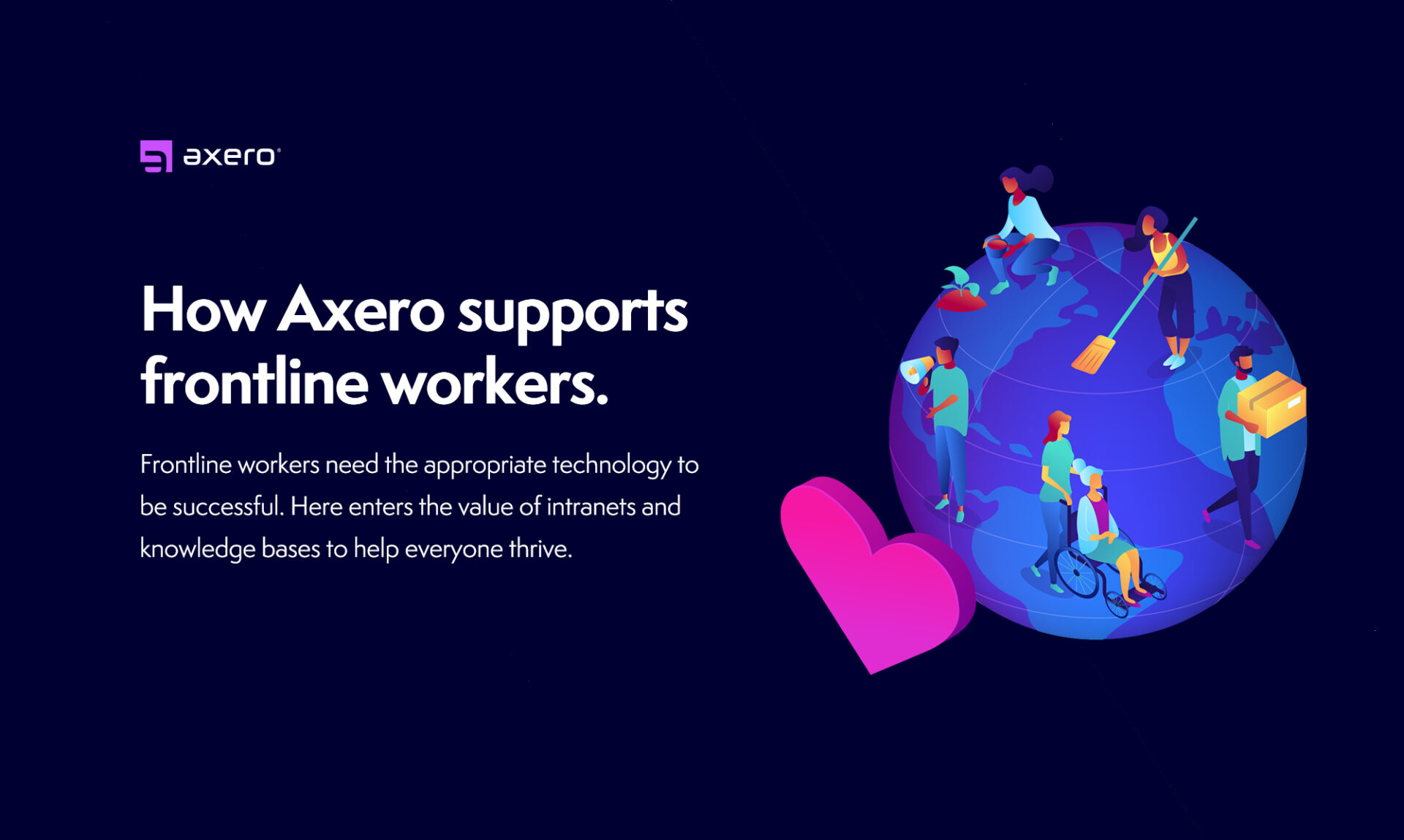


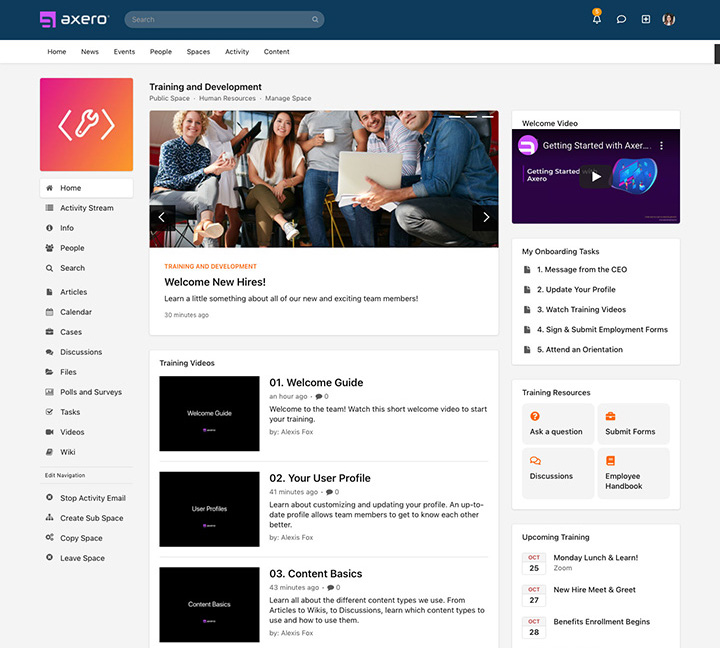
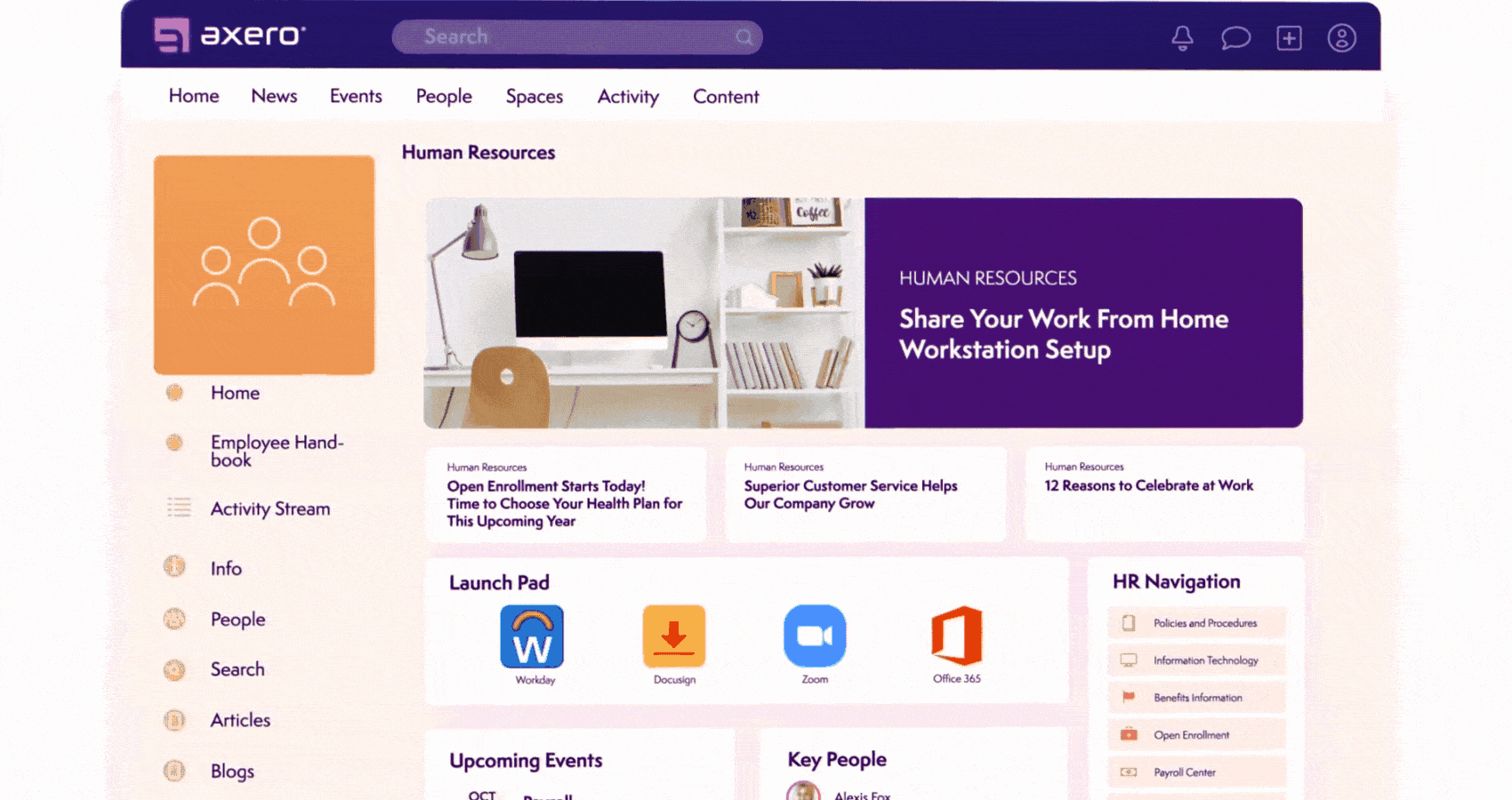


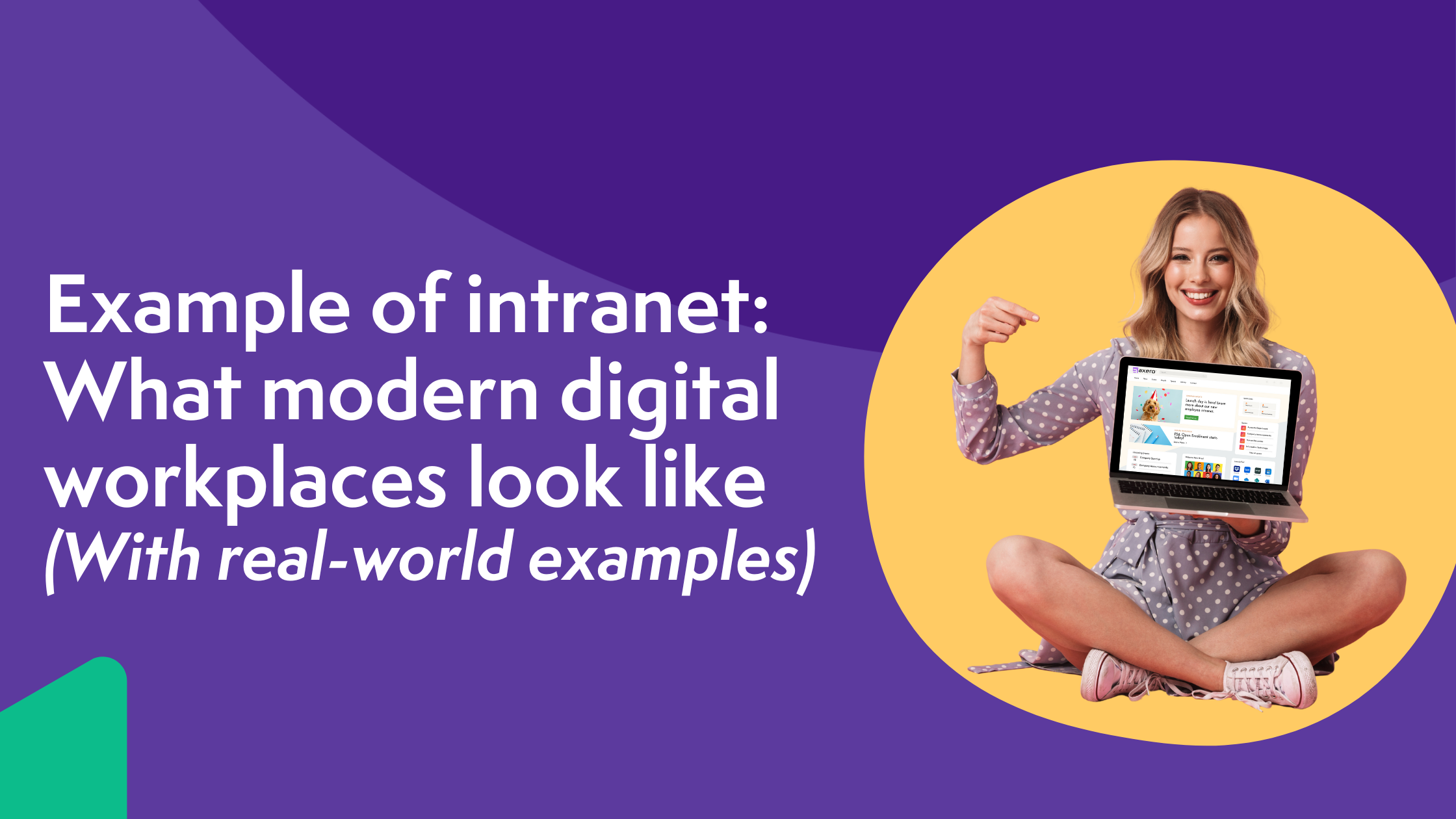

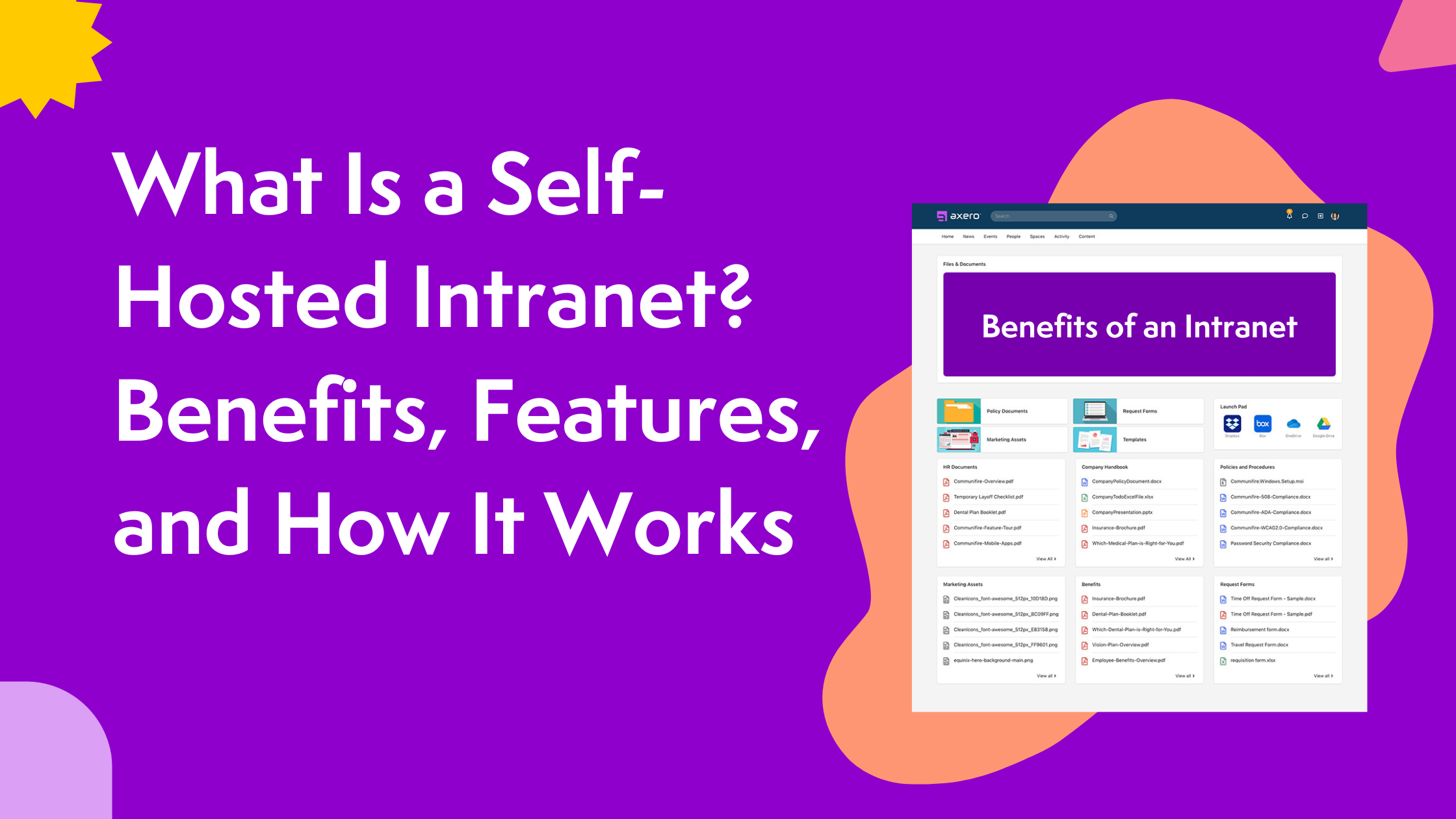







 info@axerosolutions.com
info@axerosolutions.com 1-855-AXERO-55
1-855-AXERO-55


